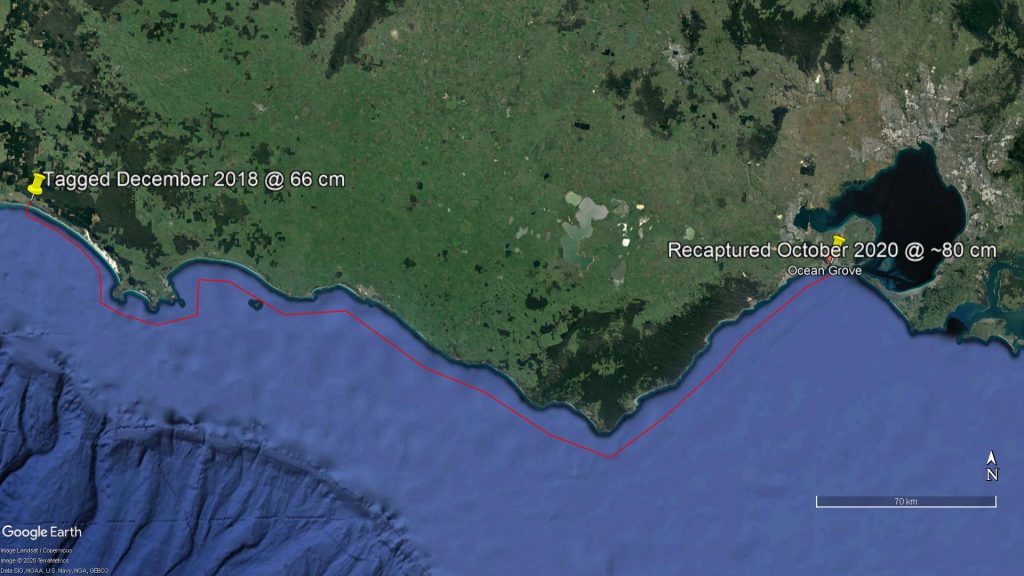Tagged Mulloway Travels 400 km from the Glenelg to the Bellarine
Since August, we have recorded nine additional Mulloway recaptures as part of our recreational tagging program. Following the recent heavy rain and flows, a local by the name of Mark Asplin was walking along the beach near Ocean Grove last Saturday when he spotted a tagged Mulloway washed up along the shore. Having read the tag, he got in touch to pass on the details. The Mulloway measured around 80 cm and while unfortunately dead, was otherwise in good condition. Mark also noted a European Carp washed up nearby so it’s likely both fish were affected by the recent flows and change in environmental conditions. The fish was originally tagged by Barry Starling at 66 cm nearly two years ago (December 2018) in the Glenelg River near Nelson. That’s over 400 km away! Barry was delighted to hear where his fish had ended up.

You might recall another tagged Mulloway over a year ago, made a similarly long journey from the Barwon River (where it was tagged) to the Coorong, presumably to breed (see this previous post). However, this recent recapture provides the first evidence of Mulloway moving in the opposite direction from west to east. At 80 cm, this recent recaptured individual was presumably preparing to breed for the first time this spring/summer. This important recapture shows the broad-scale movements of Mulloway and vast population connectivity that exists across our state.
There were six other Mulloway tagged and recently recaptured in the Glenelg, while a further two fish were tagged off Browns Bay (in South East SA) and recaptured inside the Glenelg, reinforcing that cross-border connectivity. Shane Murrell tagged a 63 cm in November 2018 at Browns which was recaptured by Barry Starling up from the Glenelg mouth, in August this year when it was 77 cm. The other was tagged at Browns by Tim Murrell in March this year and recaptured by Bruce Holding last month near the Glenelg mouth. In just over 200 days the fish grew only 4 cm, which is typical of the cooler months of the year.
Finally, of the fish that were tagged and later recaptured in the Glenelg, there was a trend for fish to be moving downstream, i.e. several were tagged from Sandy Waterhole and Saplings over summer and recently recaptured closer towards the mouth. This is consistent with the knowledge that fish species with a lower tolerance to freshwater, often move downstream closer to the mouth during periods of high flow.
Thanks to all anglers involved in the program and to those who continue to follow these research findings.
